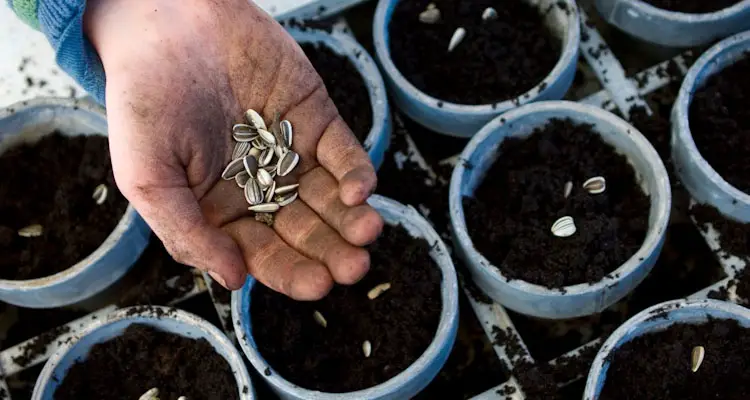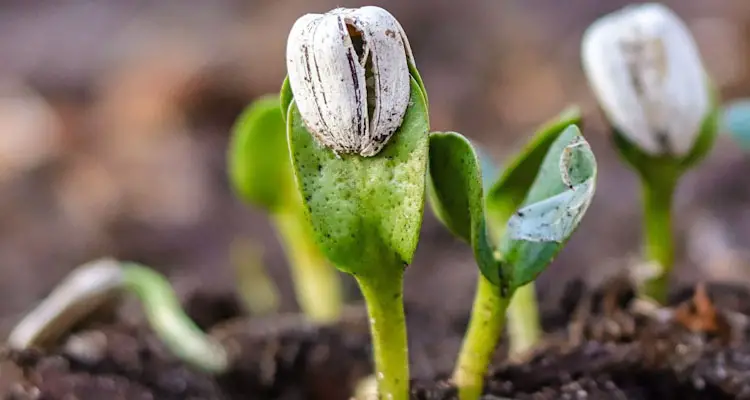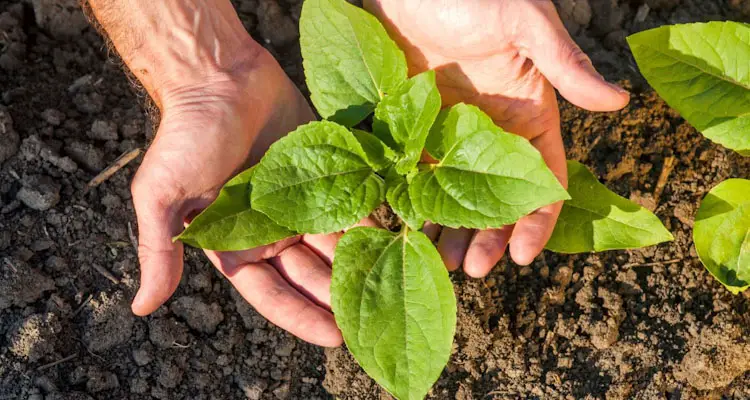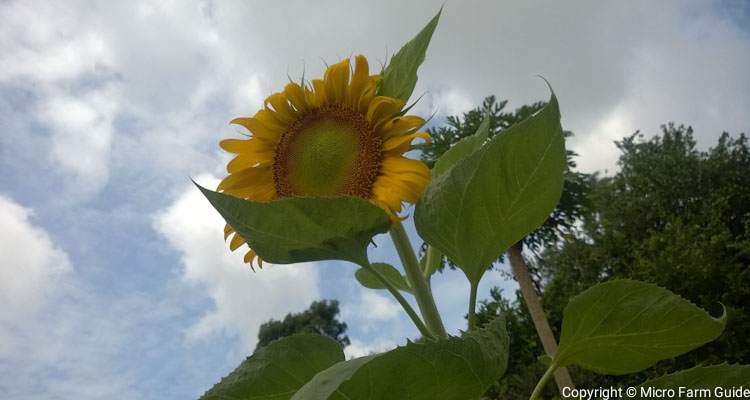Nothing says summertime like fields of gorgeous Sunflowers in bloom. They have been depicted in everything from movies to coloring books, and treasured by gardeners worldwide.
However, if you have already missed the late-Spring planting window, you might wonder how late can you plant sunflowers?
Ideally, Sunflowers prefer warm weather, and for the latest, they should be planted at least 3 months before cold temperatures sets in. As a result, you can count backward from the expected chill date in your area and plan accordingly.

These planting limitations can vary, depending on the variety and whether the sunflowers are planted in containers or outside.
In this article, we’ll explore the best and latest times to plant sunflowers and give tips on caring for these beautiful plants to get the best results.
How Late Can You Plant Sunflowers In Your Garden?
If you plan to sow your seeds in your garden, the latest you can plant your seeds is around mid-August.
Typically, your sunflowers can take up to two months to bloom, so if you plant them any later than this, there is a risk that they’ll be destroyed by the frost and snow of fall.
If you live in a subtropical or tropical climate, then feel free to plant your seeds throughout the year. However, keep an eye out for excessive rain damage and pesky creatures in these areas.
Note: You can also check out our article explaining when and how to harvest sunflower seeds if you intend to collect them either for cooking or replanting.
Planting Sunflowers Late In A Container
Your growing season is much different if you’re planting your sunflowers in a container – especially if you plan to grow them indoors.
If you’re growing your sunflowers indoors, you can sow them in late August and beyond, as long as you can provide the optimal conditions.

You need to remember to plant your sunflowers in a large pot and ensure you have enough indoor space to store your plants.
Remember, some sunflowers can grow as tall as two meters, so ensure they have enough space to breathe and access adequate sunlight to thrive.
When’s The Best Time To Plant Sunflowers?
With all that said, Sunflowers are easy to grow from seeds, and they’re usually sown between April and May.
Ideally, they should be sown in the warmer months when there’s no risk of frost damage, so you may even plant them in June.
There are several varieties of sunflowers, but most take 11-18 weeks to start flowering.
You can expect your sunflowers to grow to impressive heights (some up to two meters!), and they look great in any yard, flower bed, allotment, or home.
How To Keep Late-Planted Sunflowers Healthy
Sunflowers planted outdoors in mid-August will require extra care and attention to thrive.
The following are some tips and tricks you can use to keep your late-planted sunflowers healthy.
1. Use Healthy Seeds
Choose plump, healthy seeds to get the best possible start. If you’re using saved seeds, ensure they are clean and free of visible defects.
If you’re planting more than one seed, make sure you sow them at least six inches apart and one inch deep so they don’t become overcrowded.

When planting your seeds outdoors, you’ll also need to protect them from birds and cutting insects.
While your seeds are germinating, we recommend placing a thin netting sheet over your sunflowers so they can begin sprouting without being plucked from the ground.
2. Make Sure Your Soil Is Fertile
Suitable soil is vital if you want to ensure your sunflowers germinate quickly.
Always make sure you’re using fertile soil; to be safe, you can add some extra liquid fertilizer.
However, if your soil is already healthy, we wouldn’t recommend adding extra fertilizer.
Doing so can increase the amount of nitrogen in the ground, which can cause significant damage to your sunflowers.
Instead, you can add some compost or organic mulch, providing an adequate supply of nutrients when the plant needs it.
3. Water Little And Often
As with all plants, watering is essential. Unlike other plants, sunflowers can still thrive without excess watering.
However, you’ll need to keep your seedlings in tip-top condition, so we’d recommend watering them daily around the roots to give them the best start in life.

You’ll need to keep your seedlings hydrated, so they won’t dry out and die before they start growing.
Once your sunflowers start to develop, avoid drenching your soil, you can decrease the watering frequency and reduce it to once a week.
If your soil becomes water-logged, you risk encouraging fungal infections that can destroy them and prevent them from blooming.
What Are The Best Conditions To Grow Sunflowers?
Sunflowers are not very picky, but due to how they grow, they do prefer certain conditions. Follow the tips below to produce the healthiest sunflowers.
1. Provide Adequate Direct Sunlight
Sunflowers thrive in direct sunlight. I guess the name speaks for itself.
They’ll need around 6-8 hours daily, so choose the sunniest spot in your yard.
Avoid areas that receive shade from nearby objects, such as trees and buildings.
2. Ensure The Soil Is Well Drained
Although sunflowers aren’t too picky with their soil, you’ll need to avoid any spots that may pool up with water when it rains.
So, ensure you give your sunflowers access to well-draining soil with plenty of organic matter to avoid compacting.
This will give their roots enough space to stretch out. In ideal conditions, these can grow more than 2 feet deep and 3 feet across to accommodate the potential size of these fantastic plants.
3. Protect From Strong Winds
Unfortunately, sunflowers are notoriously fragile, so when picking a planting location, you’ll need to ensure that they’re sheltered from strong winds.
Some of the most popular spots tend to be around the sides of buildings or along fence lines.

If your sunflowers produce heavy heads, this is even more important, as the strong winds can devastate your flowers.
Final Thoughts
Sunflowers are a timeless addition to any yard or home, but if you want them to thrive, you’ll need to plant them in the best conditions.
Although it’s possible to sow sunflower seeds later in the year, you shouldn’t plant them past mid-August if you plan to keep them outside.
If you want to plant sunflowers in the latter half of the year, sow your seeds inside and ensure they have access to plenty of sunlight and healthy soil.
References
Almanac. How to Plant, Grow, and Care for Sunflowers. almanac.com/plant/sunflowers. Accessed October 2022

